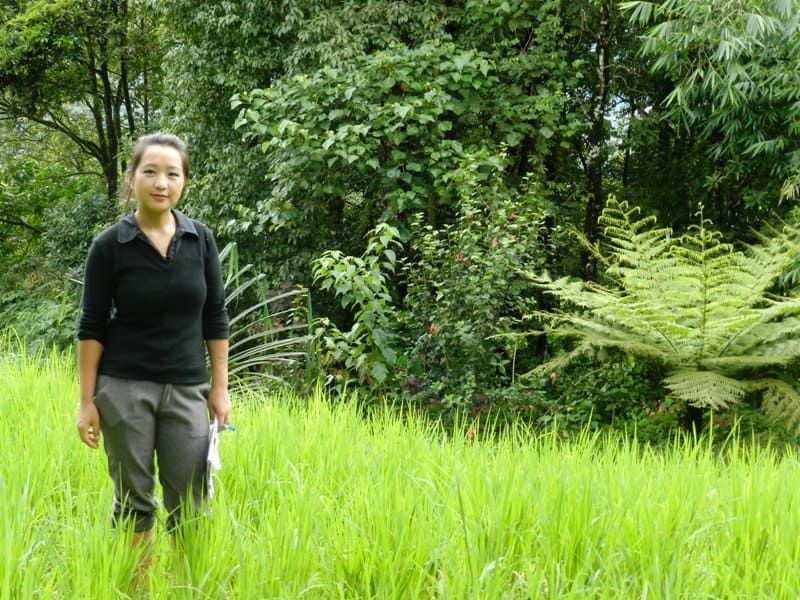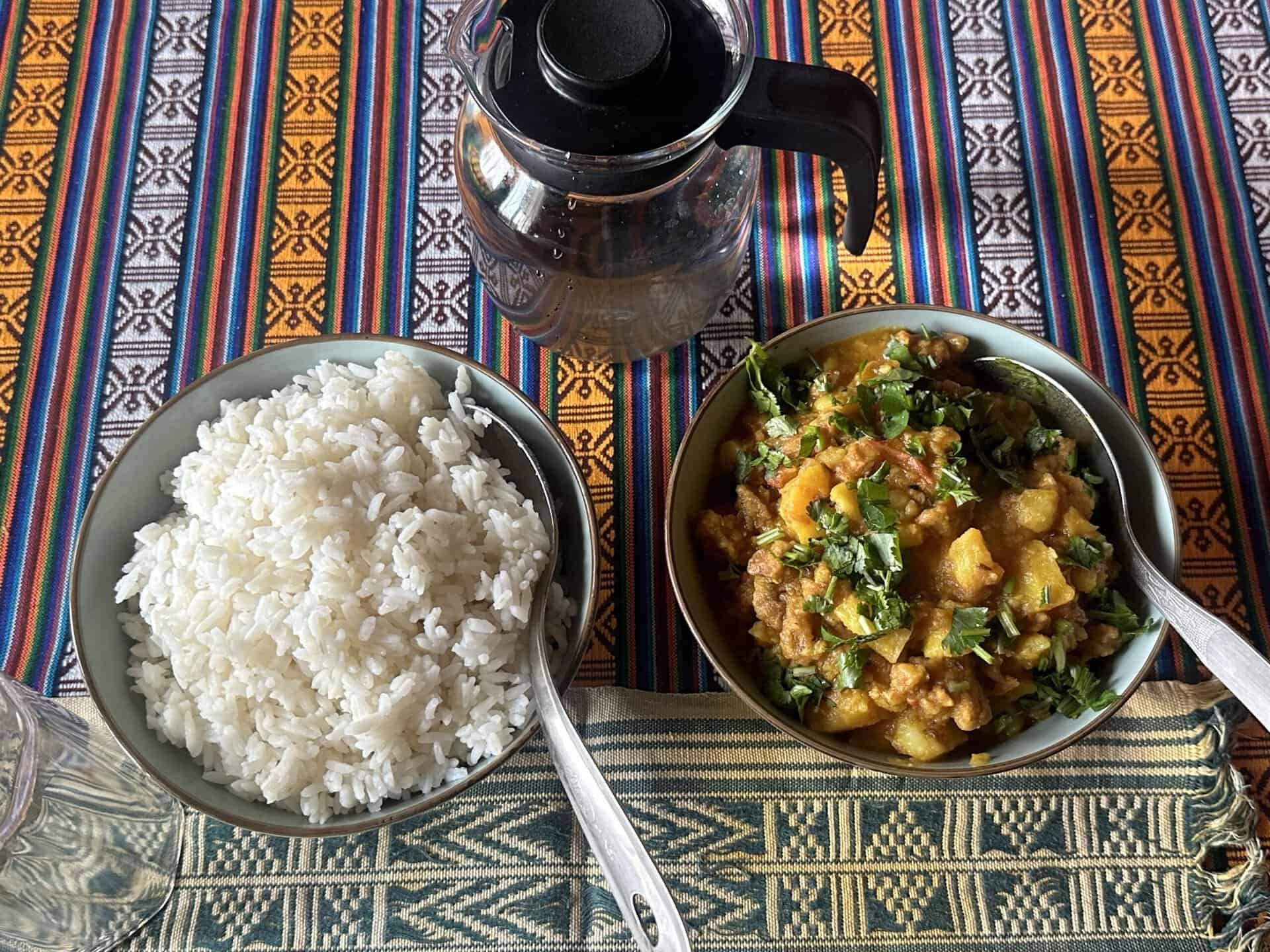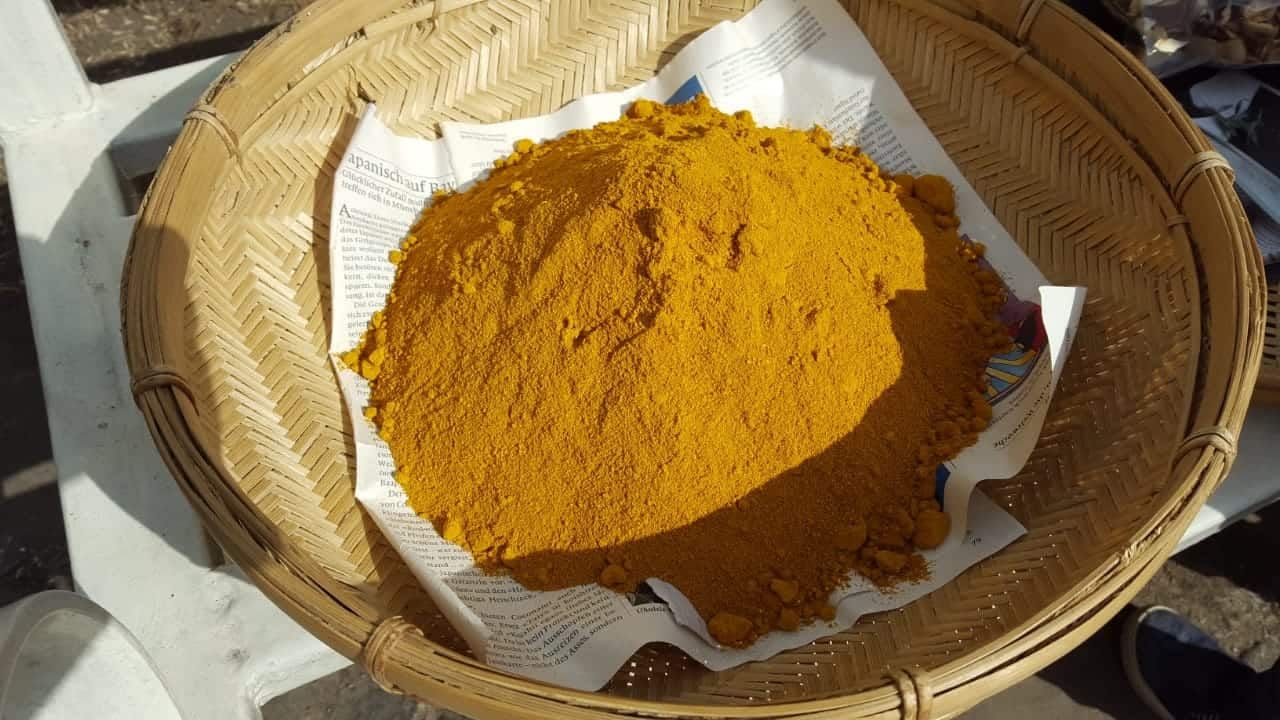Sikkim – The scent of traditional cleansing & healing in the Himalaya
In the air lies an uplifting herbal scent. The pleasant smell of the smoke creates an environment of devotion, dignity and inspiration that supports our prayers and meditations.
Traditional cleansing and healing in the Himalaya
Later the guide lets us know that the calming of our spirit is thanks to the herb mixture “Lawudo”.
“Lawudo” is made up of three parts of rhododendron leaves, 2 parts of junipers tips and a small part of juniper berry. This incense mixture is often used during meditate or prayer as it harmonizes, stabilizes and calms the emotions. We can only confirm this.
Spiritual healing by connecting to the divine
The burning of incense has always inspired people to help connect them with the divine. At Bamboo Retreat Hotel,we use the opportunity, to learn more about the traditions of healing body and mind in the Sikkim Himalaya. We try different mixtures to see their effects. WE may find an incense that fits your needs and that can help bring harmony to you. Burning incense can ensure a harmonic way to start the day during your visit at Bamboo Retreat Hotel and at home.
A GIFT FROM GOD – SIKKIM‘SPOWERFUL PLANTS!
The area of Sikkim with its subtropic valleys and the snowy majestic mountains (in Sikkim Northeast India, with the thrid highes mountain, Khangchendzonga), the diversity in climate zones, is blessed with many different plants used for incense. In the woodlands located in the southern hills,you can find aromatic plants like ginger, galangal, mugwort, costus and ginger lily. The northern hills are in a colder and drier climatic zone. Here powerful incense-plants prosper such as mountain juniper, thistles and meadow violet.
Along the southern mountains, the Deodar Cedar is found, whose resin, pines and bark are also used for smudging. Incense-plants of the Himalayas are praised all over the world since they create a special feeling of expansion and clarity. People say that the location of a plant determines the healing energy it releases when burnt. Get yourself convinced and bring try a variety of our homegrown Himalayan incense-plant mixtures available for sale at Bamboo Retreat Hotel.
A message to heaven
A life without a noticeable and omnipresent spirituality is not thinkable in the former kingdom of Sikkim. Smudging and the burning of incense are indispensable part of daily prayer and meditation. The rising smoke of incense plants is considered holy and is said to help protect and cleanse the home and its surroundings People have been studying the effects of these scents for centuries and are used not only in private homes but also in many monasteries during daily meditation to ensure a better connection to spirit and the way up to higher truths.
HOW INCENSE PLANTS SUCH ASJUNIPER AND CEDAR STILL INFLUENCE THE LIFE OF PEOPLE
The daily life in Sikkim is inseparably bound with spiritual life. In every home people perform smudging ceremonies while reciting powerful prayers (mantras) to honor gods of protection, the buddhas and nature dieties. To ensure a deep connection to the divine.
All temples and monasteries have incense-ovens built of stone outside in which entire branches of the juniper or cedar are burnt for incense during prayer and special ceremonies.
In their homes people either use incense sticks or burn a small amount of incense-plant material on a piece of hot coal inside an incense-container. People who can afford it use incense sticks or incense powder. In front of the house altar, there is usually a container filled with sand. People put their incense sticks into it to let them develop their warming and harmonizing scent.
SMUDGING FOR HEALTH AND DEVELOPMENT OF AWARENESS
People of Sikkim, now and then use the smoke of incense to cleanse their homes. With the help of cedar and salt rooms are being neutralized and cleared of negative energies. Don’t you want to try this tradition by using incense herbs grown organically in our gardens?
Surely you are familiar with the feeling that a room has “bad air” and opening the windows won’t change that. Emotions, thoughts, and actions influence the energy in a room and create a feeling of trouble and anger. The use of incense-smoke is a powerful way to change and neutralize this kind of vibe. For this reason, people around the world make use of incense-burning, especially in temples, churches and holy shrines where many people come together.
THE HEALING PROPERTIES OF OUR DIFFERENT INCENSE PLANT MIXTURES
“Scent overcomes the mind”. The smoke of burnt incense induces a calm in the deep structures and caves of our consciousness. It pacifies spirit and mind at the same time.
At Bamboo Retreat Hotel shop, you can buy a variety of incense plants and incense plant mixtures.
Citronella and Lemon Grass
- Parts Used: Leaves
- Advantages: Refreshing and uplifting
- Citronella and lemongrass belong to the family of sweetgrasses (Pocaceae)
- They are rich in essential oils and automatically release an aromatic and well-smelling smoke when used as incense
- Effect: It creates a positive atmosphere that promotes letting go, healing, positivity, and effortlessness.
Indian Wormwood/ Indian Mugwort (Artemisianilagirici)
- Nepali: Titeypati
- Used Parts: Leaf and stem
- Advantages: Relaxing and calming
- Mugwort belongs to the family of Asteraceae. It is a hardy bush, which can grow up to 2 meters in height. It doesn’t only grow in Asia but is also found in Europe and North America. It is known as one of the most important magical plants in Europe.
- Effect:When used as incense, mugwort can help in to make decisions, and letting goes of the past. If it is used as incense sticks it has calming, relaxing and warming properties that ensure a good sleep.
Japanese Red cedar/ Japanese Sugi Pine (Cryptomeriajaponica)
- A bundle of incense sticks
- Nepali: Dhoopee
- Used Parts: Leaf, branch tops, branches, bark
- Advantages: Cleansing
- Japanese cedar is part of the monotypic family of the conifer trees in the subfamily of the cypress Cupressaceae. It was a present from Japan to the king of Sikkim, and ever since has been growing in many parts of the region.
- Effects: It is very commonly used as an incense plant, especially during big ceremonies. Its properties are similar to the ones of the Himalaya cedar and is said to bring luck, protection, and strength.
BlackJuniper (Juniperusindica/ Juniperus recurva Recurva)
- Nepali: Bhairung Patti
- Bhutanese: Shukpa Sang
- Used parts: needles, tops of the branches, branches and the resin.
- Advantages: it increases attentiveness
- In the northern hemisphere, there are about 40 types of juniper. In the Himalaya, there are types of juniper that can grow up to 6000 meters. And the black juniper is considered holy.
- Effects: Juniper-incense is often used for the morning cleansing.
Dwarf rhododendron (Rhododendron-Anthopogon)
- Nepali: Sun Paati
- Bhutanese: Phalup Sang
- Used parts: leaf
- Advantages: it increases trust
- This kind of dwarf rhododendron is a low bush that grows in the heights of Sikkim. When used as incense it has a soft, sweet-fruity and warm scent and is famous along with the hill juniper berry, which makes up the Lawudo-Curing Mixture
- Effects: As an incense, it stimulates the heart and blood circulation. Psychologically it strengthens trust and gets rid of feelings of fear and suppression. Because of this, it is used with emotional instability and states of fear.
Ways of healing through incense are diverse in the western world too. Besides the eastern method of incense burning another method is used in aromatherapy whereby suitable incense-plants or essential oils are kept on a warm source to allow the scent to spread slowly and distributes itself all over the room.
Learn more about this wonderful traditional that is lived by at Bamboo Retreat Hotel. We are looking forward to meeting you.

Er wählte Rumtek als seinen neuen Sitz und baute das Kloster neu auf und errichtete oberhalb des alten Klosters das neue Kloster Rumtek, von welchem auch das Bild ist. 1966 weihte der 16. Gyalwa Karmapa das neue Kloster ein. Oberhalb des Klosters wurde in den 1990er Jahren das Gebäude einer Klosteruniversität errichtet. Dieses Gebäude wurde durch das Erdbeben 2011 erheblich beschädigt.
Das Kloster liegt ca. 25 km von Gangtok entfernt, die Fahrtzeit vom Hotel dauert ca. 90 Minuten.
Jeden Abend gab es ein grandioses 3-Gänge Menü. Die Speisen werden alle frisch zubereitet, meistens in kleinen Schüsseln serviert. Neben Fleisch, frischem Gemüse aus dem Garten und tollen Gewürzen, überzeugten mich die täglich wechselnden Nachspeisen.











